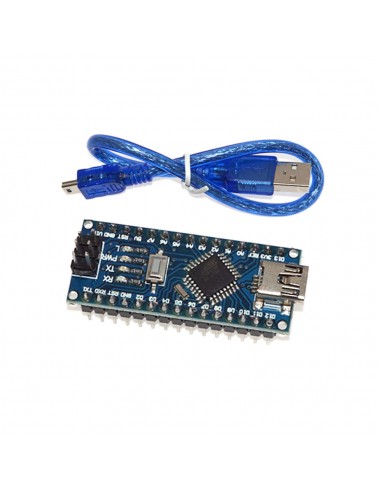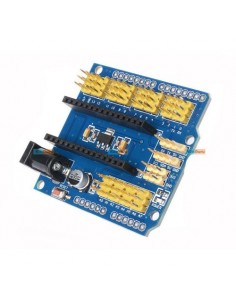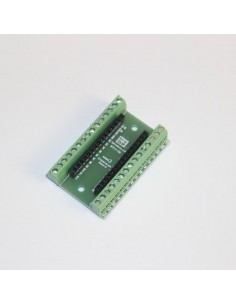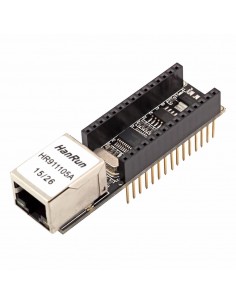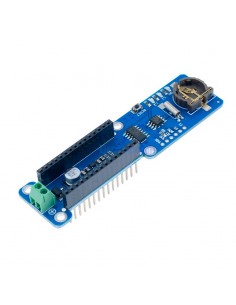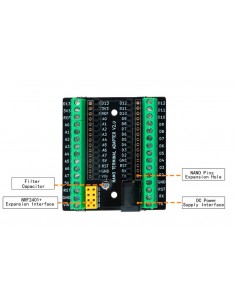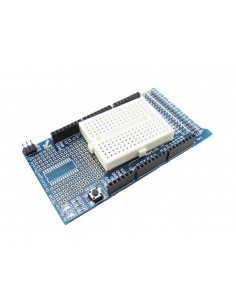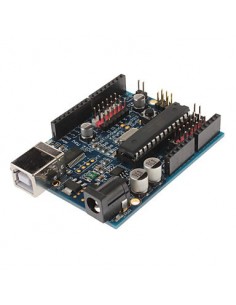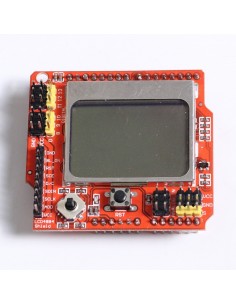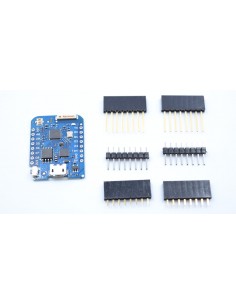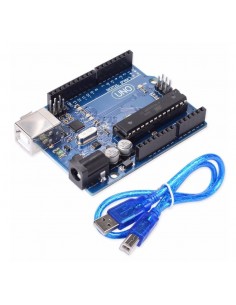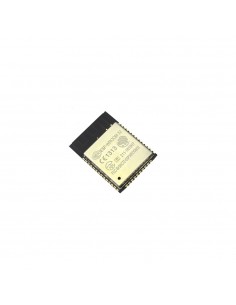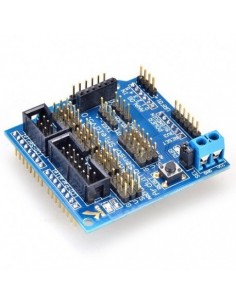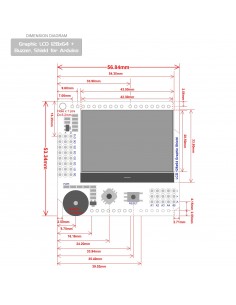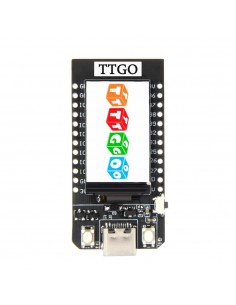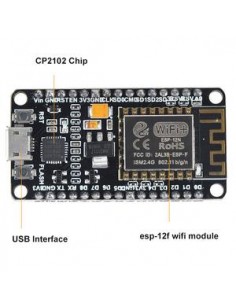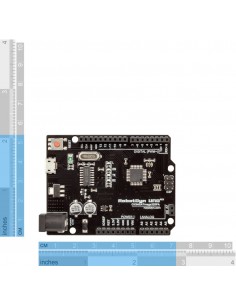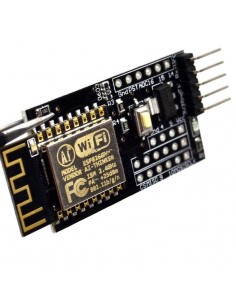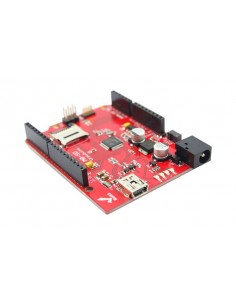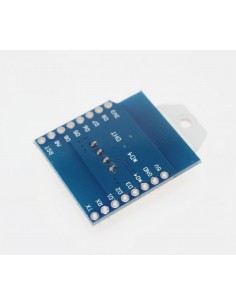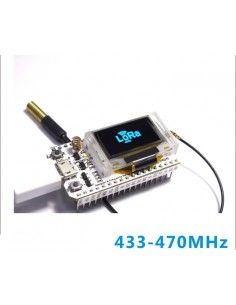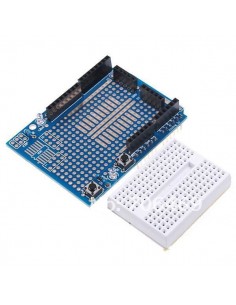Nano V3.0 CH341SER MiniUSB
ATmega328 / 16 МГц / Flash ROM 32 кБ
Overview
Platform Nano, built on the microcontroller ATmega328 (Arduino Nano 3.0), is small in size and can be used in the labs. It has similar functionality to the Arduino Duemilanove, but differs assembly. The difference lies in the absence of a power connector and DC operation via cable Mini-B USB.
Power:
Arduino Nano can be powered via connection Mini-B USB, or from an unregulated 6-20 V (terminal 30), or regulated 5 V (pin 27), external power supply. Automatically selects the source with the highest voltage.
FTDI FT232RL chip receives power only if the platform itself is powered by USB. Thus, when running on external (non-USB), there will be no voltage 3.3 V generated chip FTDI, while the RX and TX LEDs blink only when the presence of a high signal on pins 0 and 1.
Memory
The ATmega168 has 16 KB of flash memory for storage of program code and microcontroller ATmega328, in turn, has a 32KB (both 2 KB is used to store the boot loader.) ATmega168 has 1 KB of SRAM and 512 bytes of EEPROM (which can be read and written with the EEPROM library ), and ATmega328 - 2 KB of SRAM and 1 KB EEPROM.
Inputs and Outputs
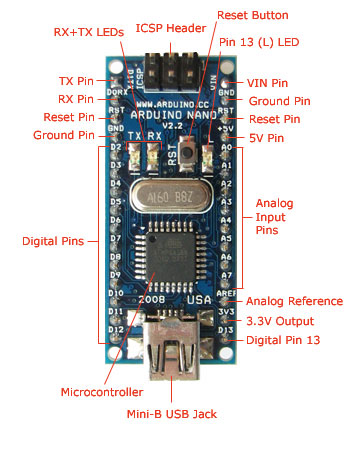
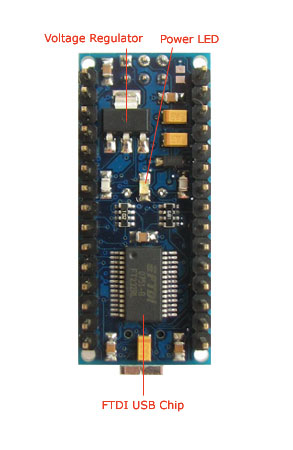
Each of the 14 digital pins on the Nano, using the function pinMode () , digitalWrite () , and digitalRead () , can be configured as input or output. They operate at a voltage of 5 V. Each pin has a pull-up resistor (disconnected by default) of 20-50 kOhms and can source up to 40 mA. Some pins have specialized functions:
- Serial Bus: 0 (RX) and 1 (TX). Used to receive (RX) and transmit (TX) data TTL. These pins are connected to the corresponding pins of the chip serial bus FTDI USB-to-TTL.
- External Interrupts: 2 and 3. These pins can be configured to trigger an interrupt on a low value, a rising or falling edge, or when the value changes. Detailed information can be found in the function description attachInterrupt ().
- PWM: 3, 5, 6, 9, 10, and 11. Any of the terminals provides PWM resolution of 8 bits by using the analogWrite ().
- SPI: 10 (SS), 11 (MOSI), 12 (MISO), 13 (SCK) . These pins Feedback SPI, which, although provided by the underlying hardware, is not included in the language of Arduino.
- LED: 13. Built-in LED connected to digital pin 13. If the value on the output is held high, the LED lights.
Installed on the platform Nano 8 analog inputs, 10-bit resolution (ie 1024 different values). Standard conclusions are measuring range up to 5 with respect to ground, however it is possible to modify the upper limit by the function analogReference (). Some conclusions have additional features:
- I2C: 4 (SDA) and 5 (SCL). Through conclusions communicates I2C (TWI). To create a library is used Wire (information visit Wiring).
An extra pair of pins platform:
- AREF. Reference voltage for analog inputs. Used with analogReference ().
- Reset . Low level signal at pin resets the microcontroller. Typically used to connect the reset button on the expansion card, closing access to the button on the board Arduino.
Note the connection between Arduino pins and ATmega168 ports .
Link
Platform Arduino Nano has multiple devices to communicate with a computer, another Arduino, or other microcontrollers. ATmega168 and ATmega328 support serial UART TTL (5V), digital pins 0 (RX) and 1 (TX). Installed on board FTDI FT232RL chip directs the interface via USB, drivers and FTDI (included in the Arduino) provide virtual COM port on a computer program. Monitoring serial bus (Serial Monitor) program Arduino allows you to send and receive text data when connected to the platform. The RX and TX LEDs on the platform will blink when transmitting data via FTDI chip or USB connection (but not when using serial communication via pins 0 and 1).
SoftwareSerial library allows for serial communication on any of the digital outputs Nano.
ATmega168 and ATmega328 support interfaces I2C (TWI) and SPI. The Arduino software includes a Wire library to usability bus I2C. More information is available in the documentation. To use the SPI, refer to the technical data of the ATmega168 and ATmega328.
Programming
Programmed via software platform Arduino. From the menu Tools> Board selected «Arduino Diecimila, Duemilanove or Nano w / ATmega168» or «Arduino Duemilanove or Nano w / ATmega328» (according to the established microcontroller). Detailed information can be found in the handbook and instructions.
The ATmega168 and ATmega328 are supplied with a recorded loader, facilitating entry of new programs without the use of an external hardware programmer. Communication takes the original protocol STK500.
You can also bypass the bootloader and program the microcontroller through terminals block ICSP (in-circuit programming). Detailed information can be found in this manual.
Automatic (Software) Reset
Nano designed so that the new code before recording restart performed by the program, rather than by pressing buttons on the platform. One of the lines FT232RL, data flow control (DTR), connected to the conclusion reboot the ATmega168 or ATmega328 via a 100 nF capacitor. Activation of this line is supply low-level signal, resets the microcontroller. Program Arduino, using this function to upload code by pressing the Upload in the Arduino environment. Submission of low-level signal to DTR coordinated with the start of writing code that reduces the loader timeout.
Function has another application. Reload Nano happens every time you connect to the Arduino program on a computer running Mac X or Linux (via USB). The following half-second after reboot bootloader works. During programming intercept the first few bytes of code to avoid making incorrect data platform (all except the code of the new program). If you are debugging single sketch recorded in the platform configuration or other data when it first starts, make sure that the program on the computer waits a second before transmitting data.
- Microcontroller:
- ATmega328
- Operating Voltage:
- 5V
- DC Current per I/O Pin:
- 40 mA
- Digital I/O Pins:
- 14
- PWM:
- 6
- Analog Input Pins:
- 8
- Flash Memory:
- 32 KB
- SRAM:
- 1 KB
- Bootloader:
- 2 KB
- EEPROM:
- 1 KB
- Clock Speed:
- 16 MHz
- USB cable:
- Сomplete set
- Size:
- 1.85 см x 4.2 см
- Brand:
- Funduino
No reviews
You might also like

